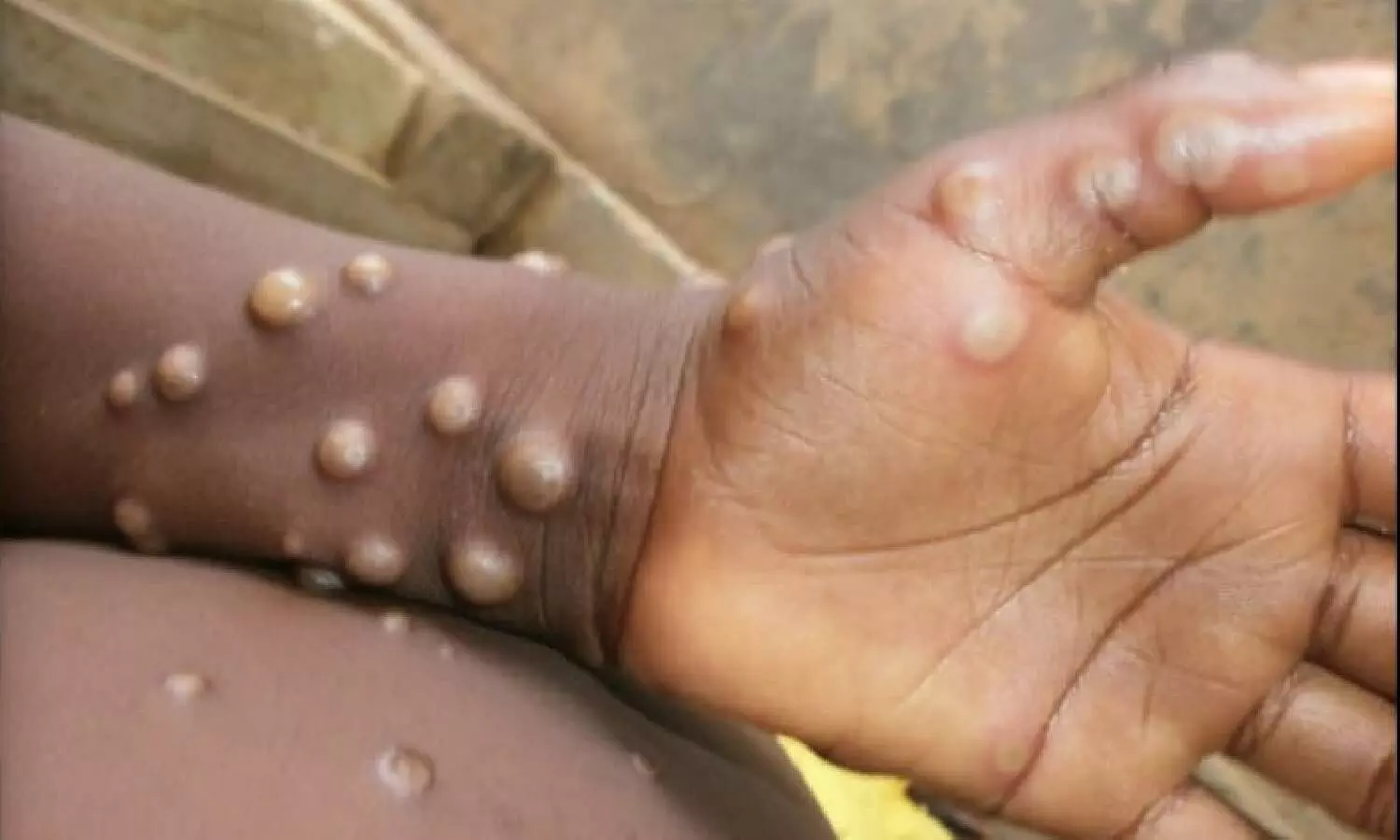What is Monkeypox? Here are the symptoms and prevention tips
As of 21 May, 92 confirmed cases and 28 suspected cases of monkeypox have been reported to the WHO from 12 countries that are not endemic (not regularly occurring) to monkeypox virus.
By Newsmeter Network
Hyderabad: As of 21 May, 92 confirmed cases and 28 suspected cases of monkeypox have been reported to the World Health Organisation (WHO) from 12 countries that are not endemic (not regularly occurring) to monkeypox virus. The countries where the monkeypox cases have been identified in May 2022 include Australia, Belgium, Canada, France, Germany, Italy, Netherlands, Portugal, Spain, Sweden, the UK, and the USA. With the disease outbreak in non-endemic countries, it is high time that we stop panicking and know what monkeypox is, what are its common symptoms, and how to prevent the infection.
Credits: WHO
What is monkeypox?
Monkeypox is a disease caused by the monkeypox virus. It is a viral zoonotic disease, i,e., it can spread from animals to humans. It can also spread between people.
Where is monkeypox commonly found?
Monkeypox is commonly found in central and west Africa where there are tropical rainforests and where animals that may carry the virus typically live. People with monkeypox are occasionally identified in other countries outside of central and west Africa, following travel from regions where monkeypox is endemic.
Why is it called monkeypox?
The disease is called monkeypox because it was first identified in colonies of monkeys kept for research in 1958. It was only later detected in humans in 1970.
What are the symptoms?
Symptoms of monkeypox typically include fever, intense headache, muscle ache, back pain, low energy, swollen lymph node, and a skin rash or lesion. The rash usually begins within one to three days of the start of the fever. Lesions can be flat or slightly raised, filled with clear or yellowish fluid, and can then crust, dry up, and fall off. The number of lesions on one person can range from a few to several thousand. The rash tends to be concentrated on the face, palms of the hands, and soles of the feet. They can also be found on the mouth, genitals, and eyes.
Symptoms typically last between two to four weeks and go away on their own without treatment.
Newborns, children, and people with underlying immune deficiencies may be at risk of more serious symptoms. Complications from severe cases of monkeypox occur very rarely and include skin infections, pneumonia, confusion, and eye infections which can lead to loss of vision.
How does monkeypox spread?
Monkeypox can spread to people when they come into physical contact with an infected animal. According to the WHO, various animal species like squirrels, rats, rodents, and primates, including lemurs and monkeys, have been identified as susceptible to and hosts of monkeypox virus.
How can we prevent it?
The risk of catching monkeypox from animals can be reduced by avoiding unprotected contact with wild animals, especially those that are sick or dead (including their meat and blood). In endemic countries where animals carry monkeypox, any food containing animal meat or parts should be cooked thoroughly before eating.
People with monkeypox are infectious while they have symptoms (normally for between two and four weeks). You can catch monkeypox through close physical contact with someone who has symptoms. The rash, bodily fluids (such as fluid, pus or blood from skin lesions) and scabs are particularly infectious. Clothing, bedding, towels or objects like eating utensils/dishes that have been contaminated with the virus from contact with an infected person can also infect others.